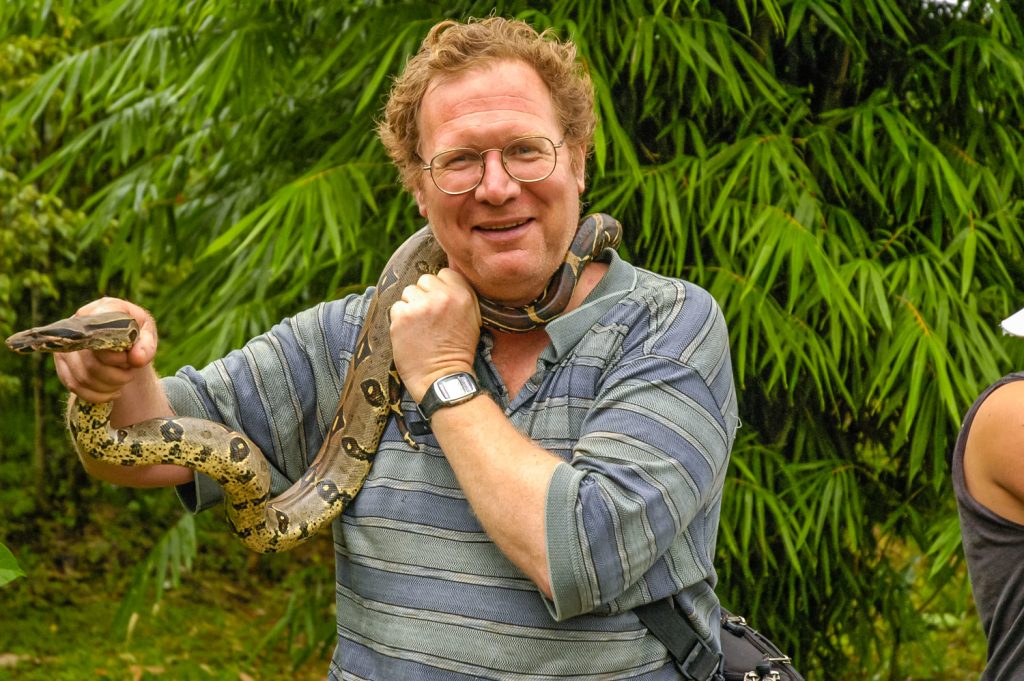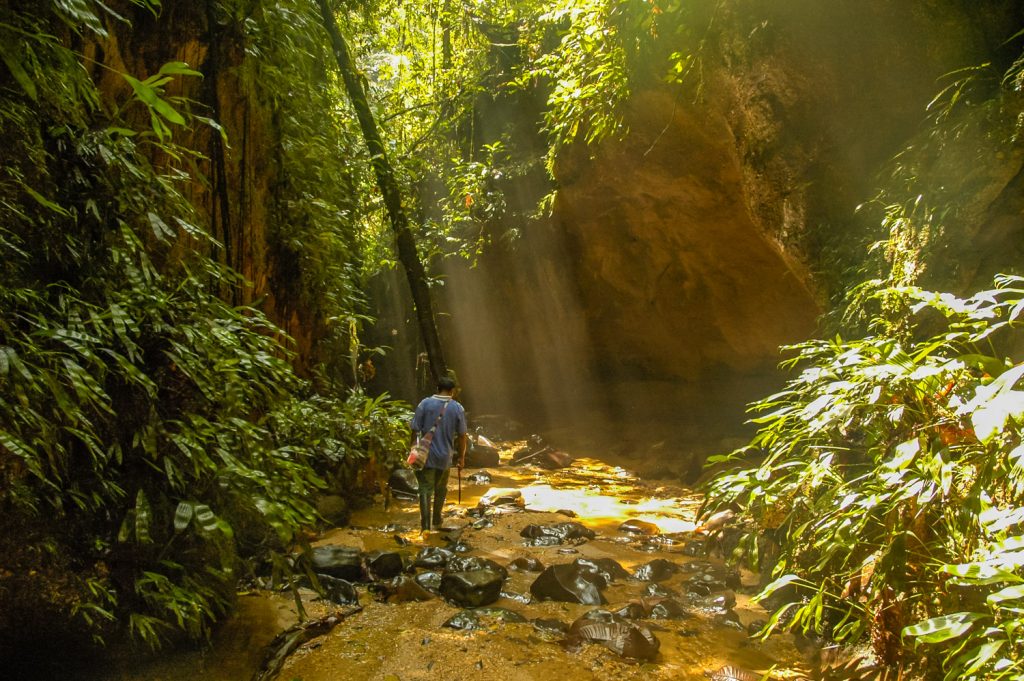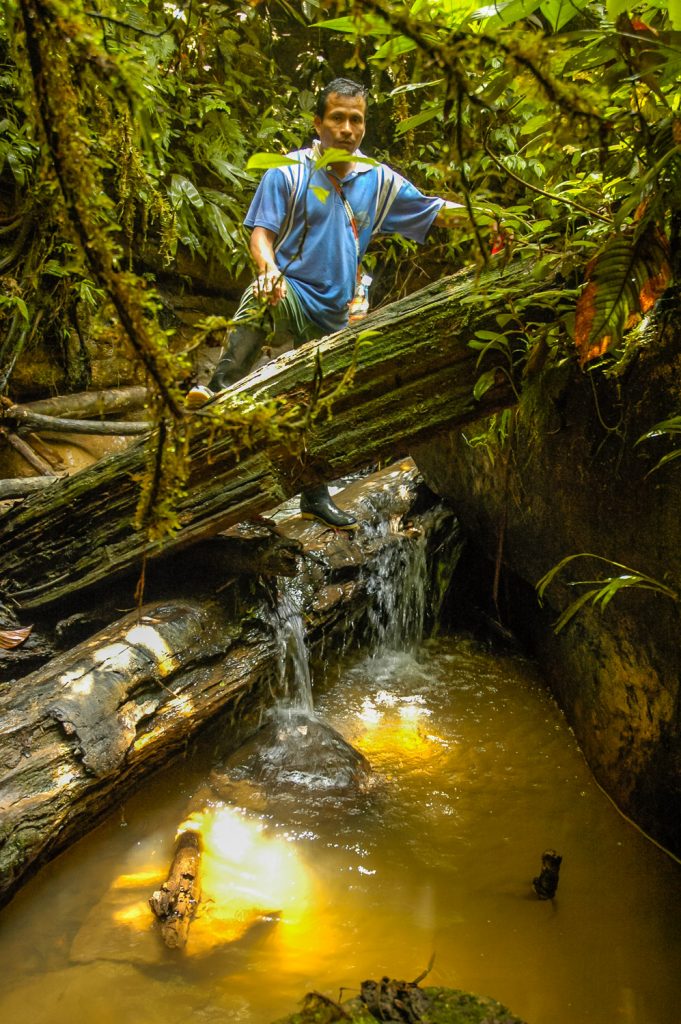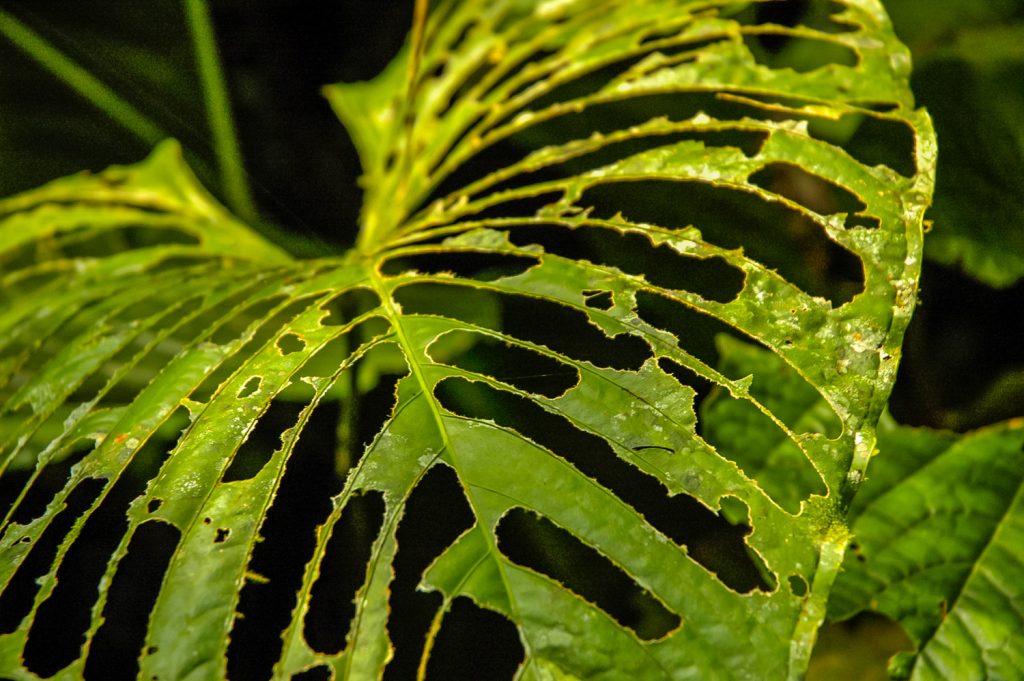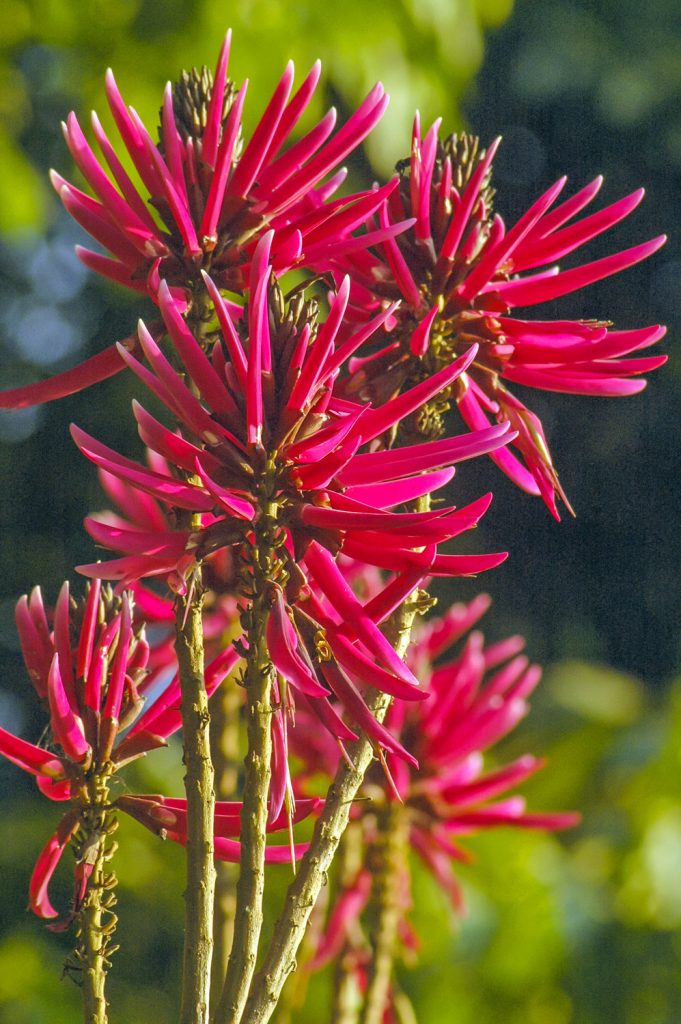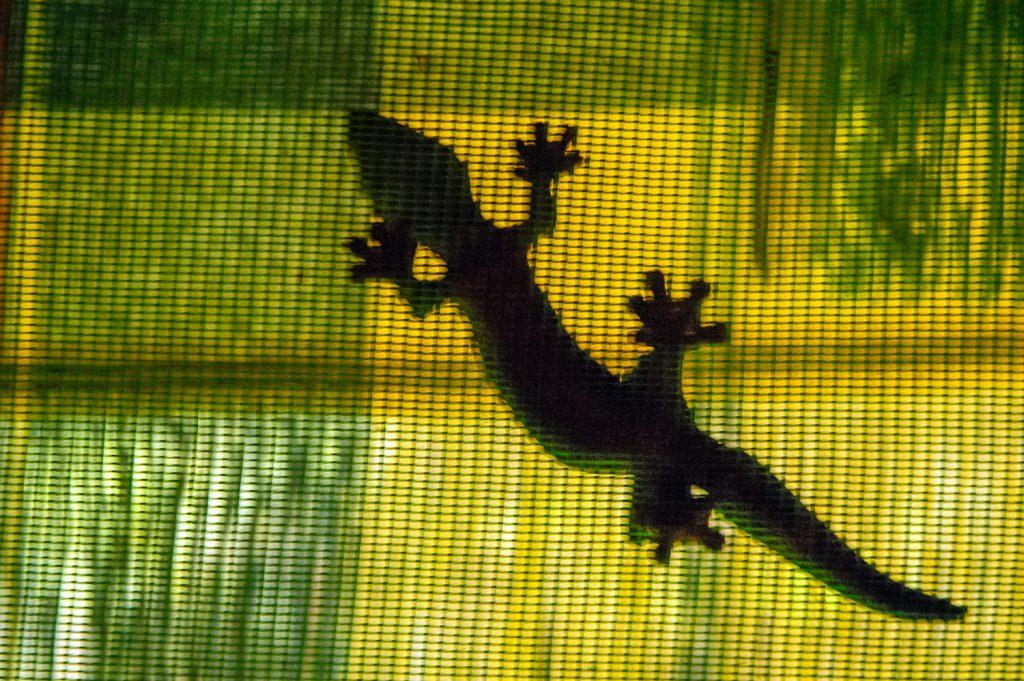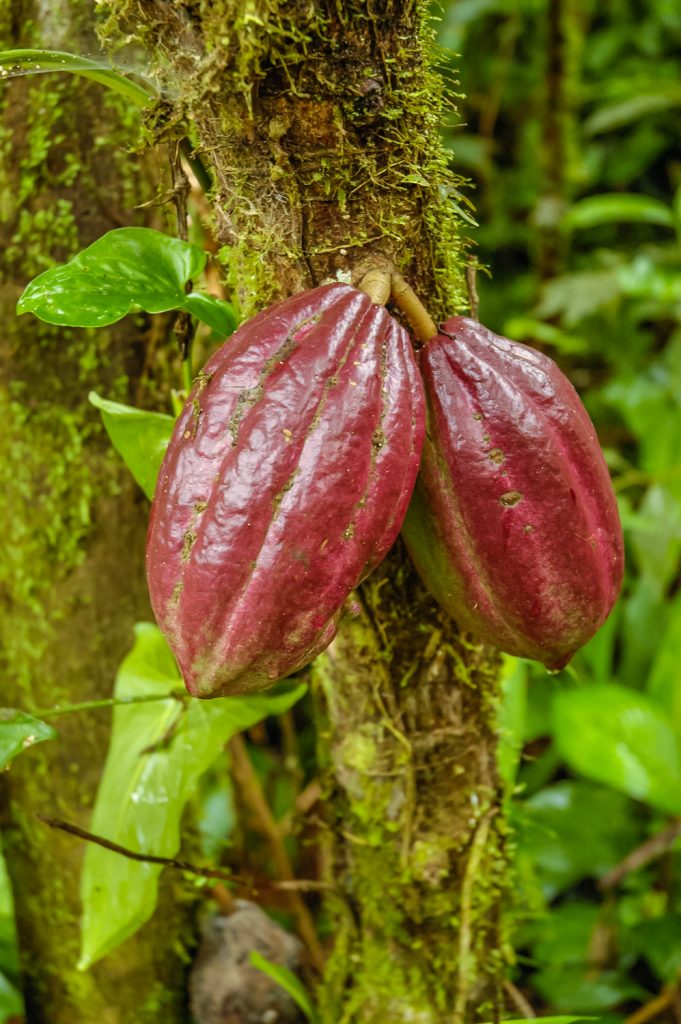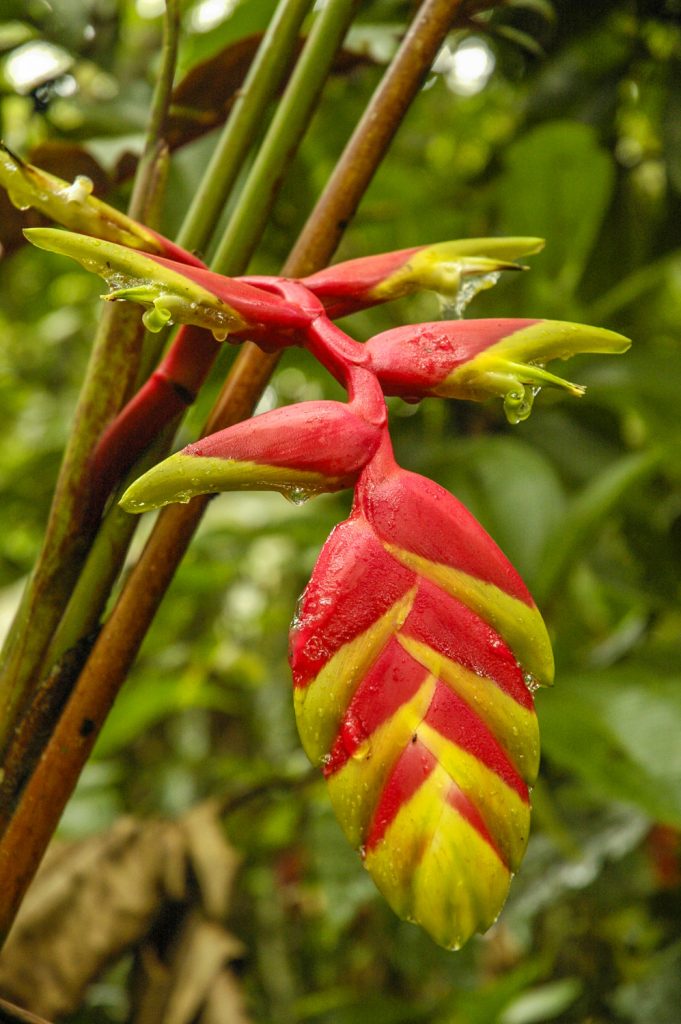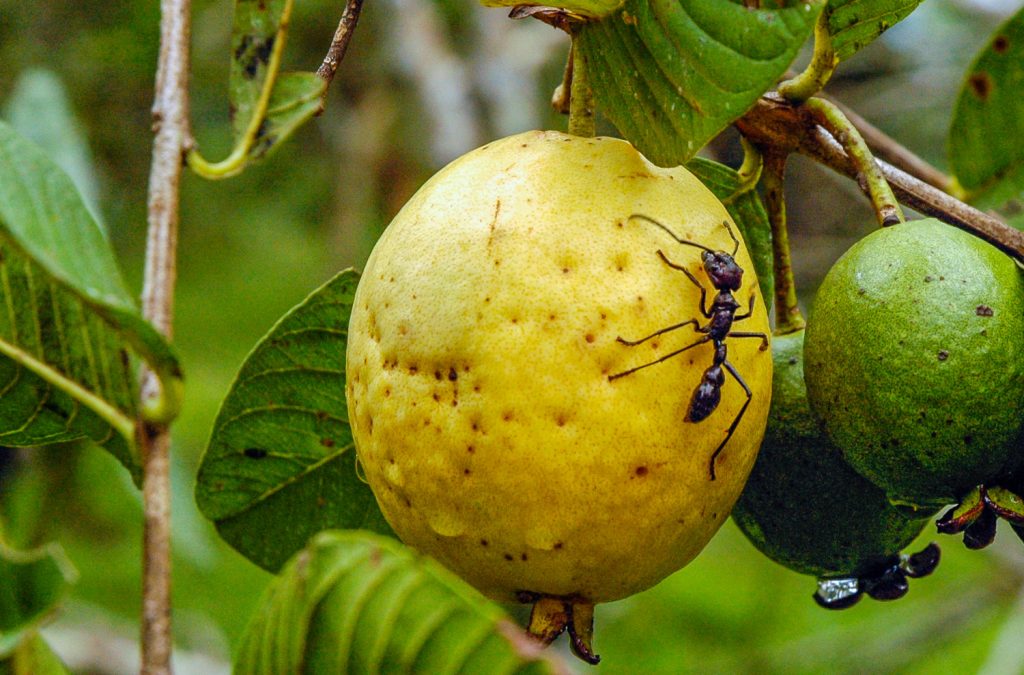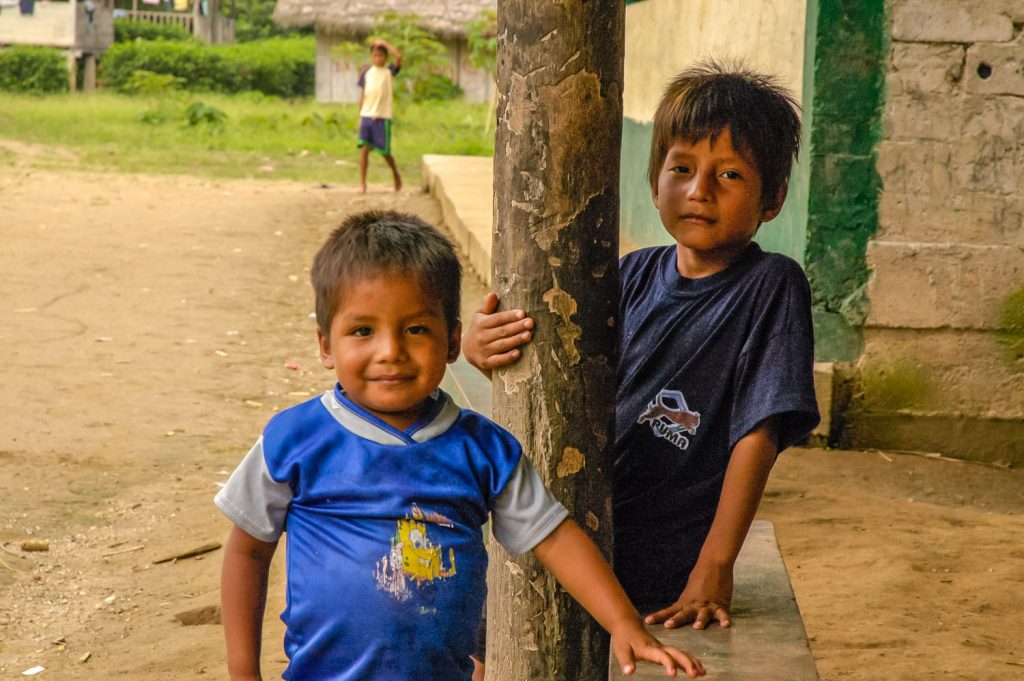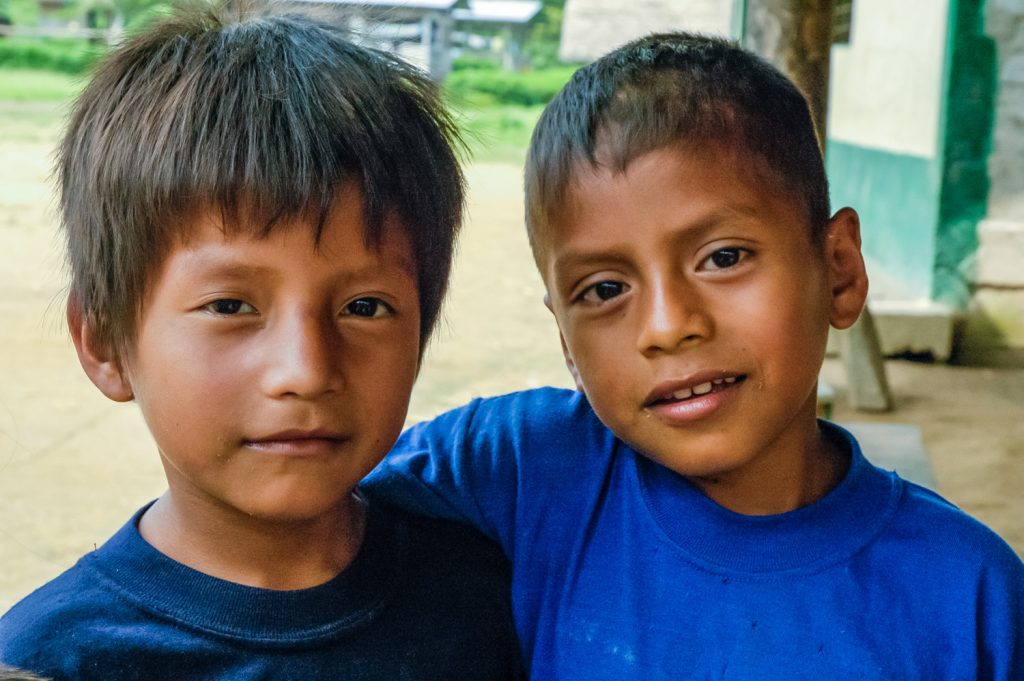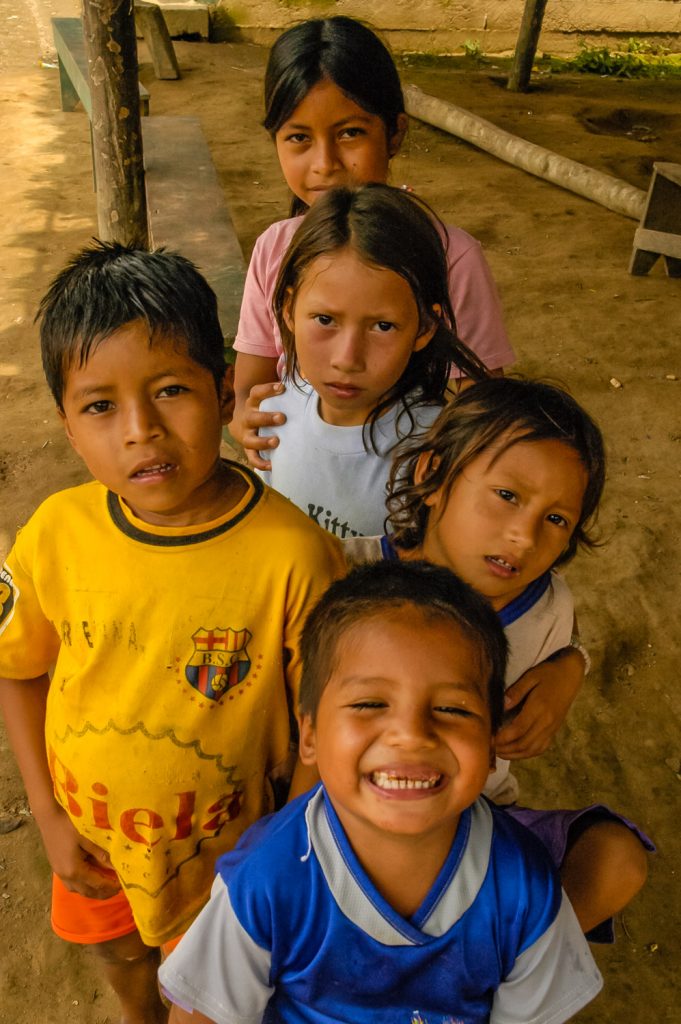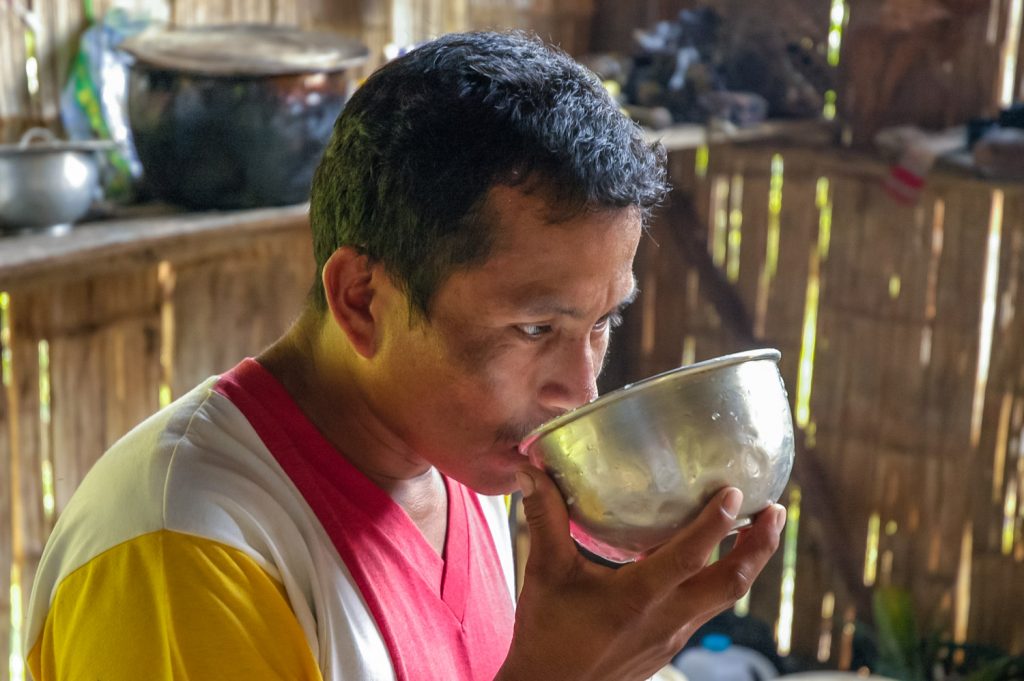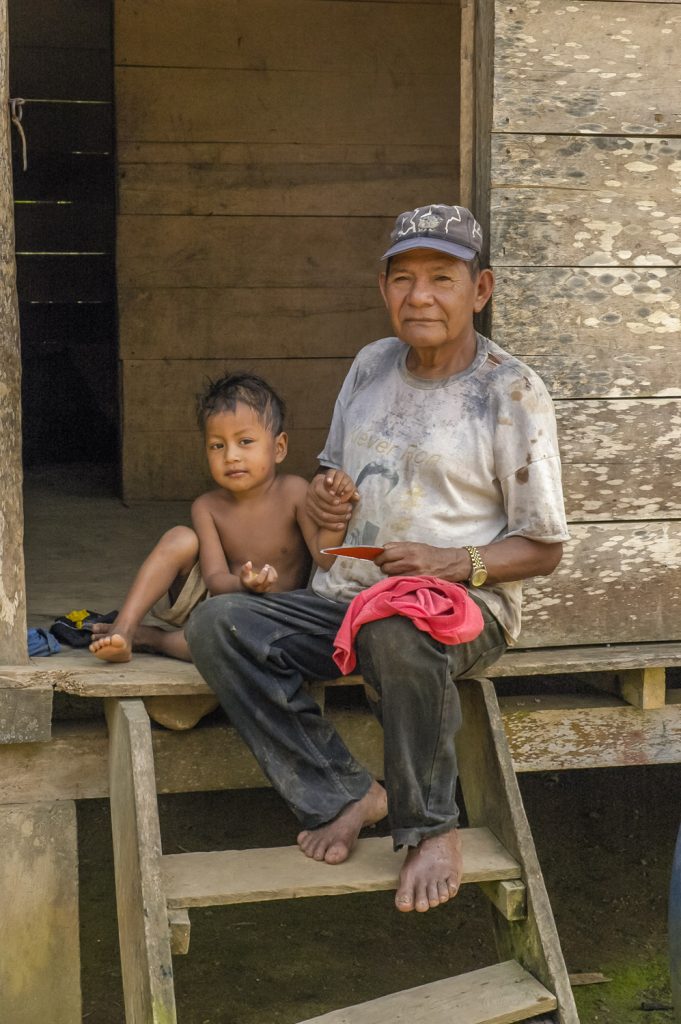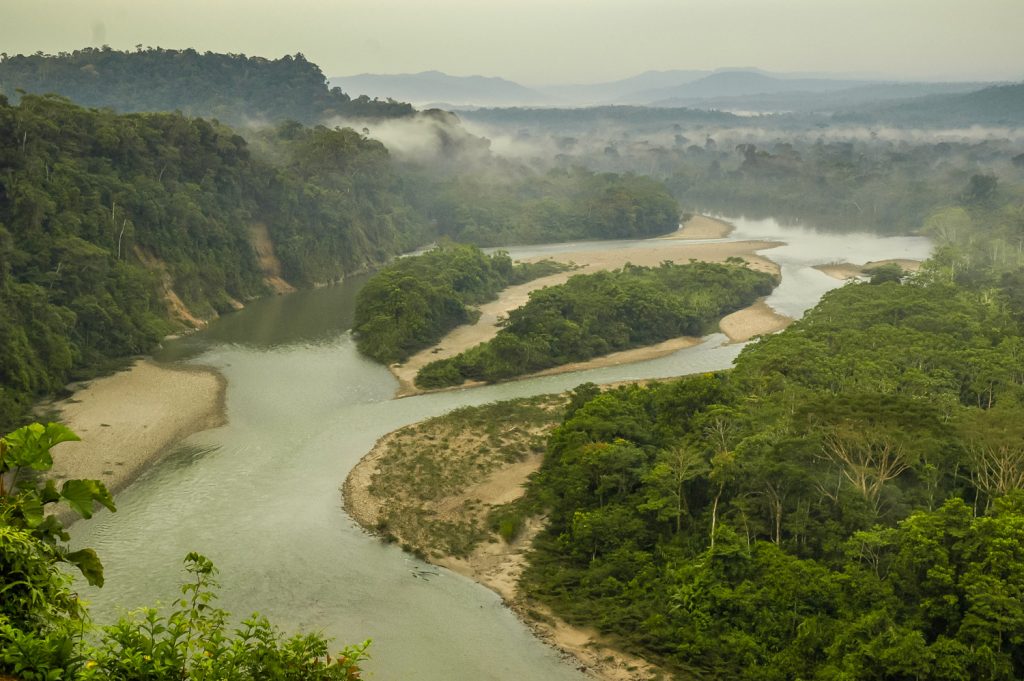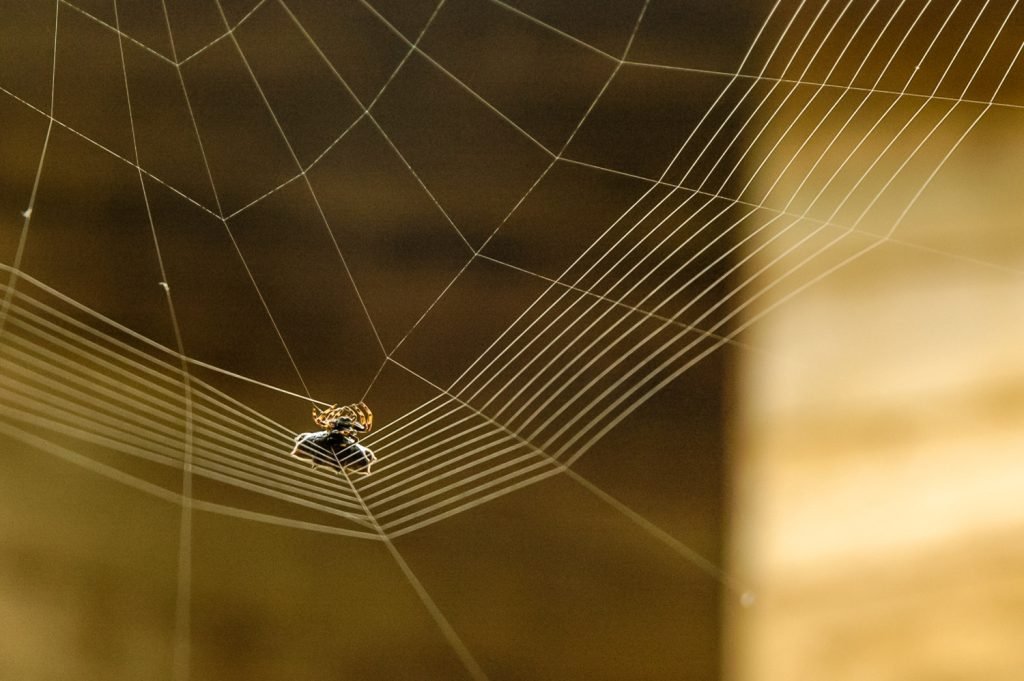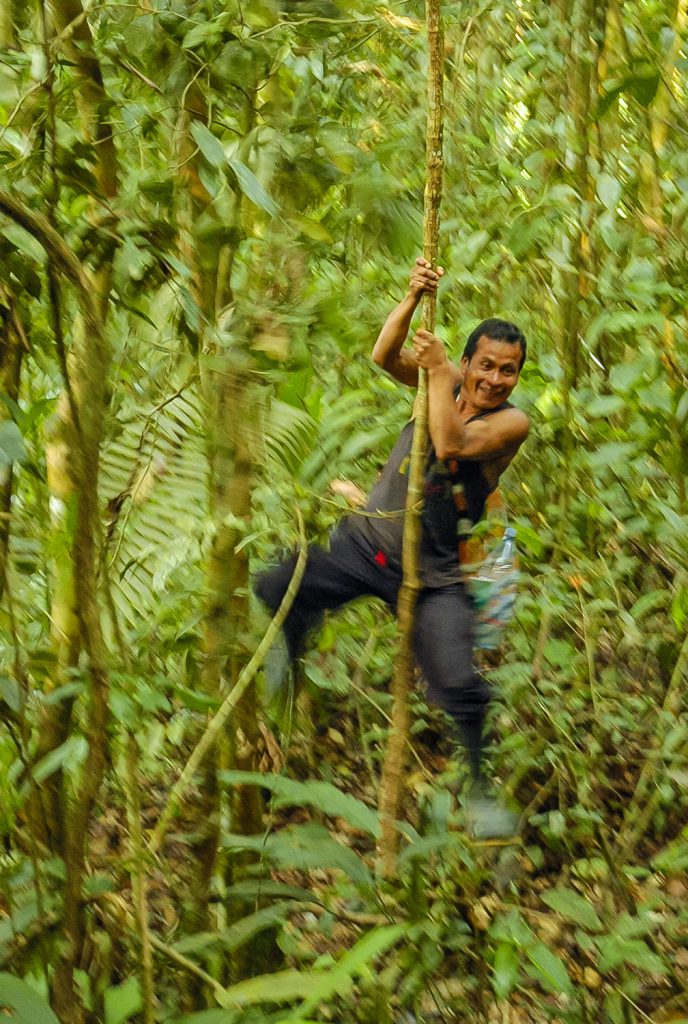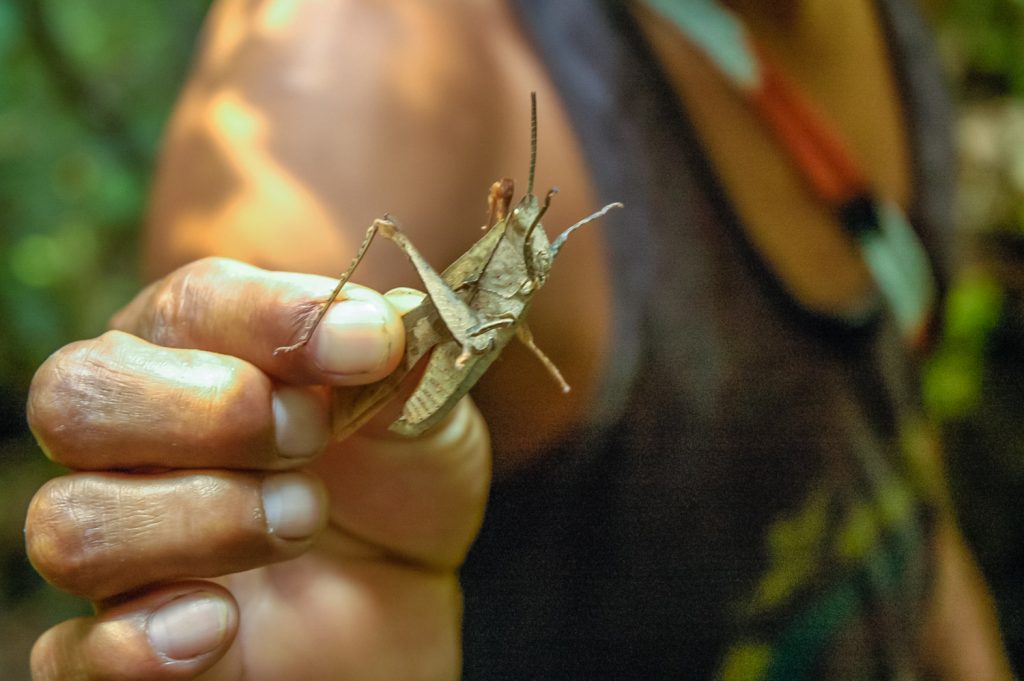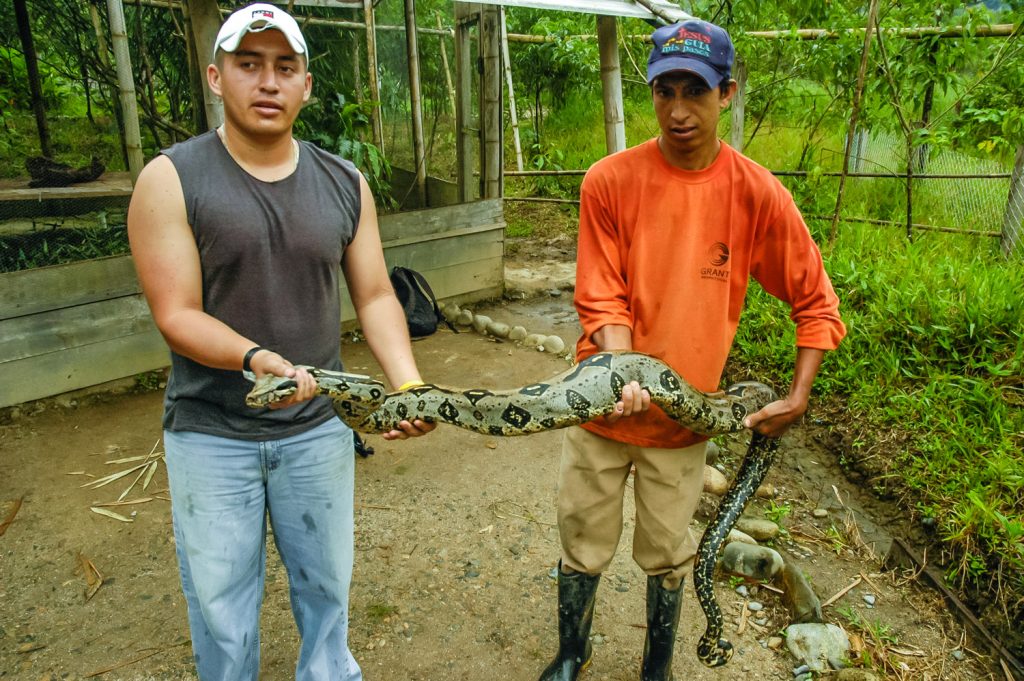
Currently I’m in Bahía de Caráquez on Ecuador’s Pacific coast. The following was written by hand several days ago in the jungle when I didn’t have access to a computer:
Written February 14, 2006, Shangrila Lodge, near Tena, Ecuador
My Quichua Indian guide Victor pulled down a plant and cut off some leaves. These, he told me in Spanish, were an antidote in case of a bite by a poisonous snake. Apparently there are several poisonous snake species in the area, whose names he told me, but the only one I recognized was the coral snake.
Twenty minutes later, along a dense jungle trail, he pointed to the ground – a snake. It was small and dark and blended into the ground and I didn’t see it until he pointed it out. I slithered away at lightening speed. This one, Victor told me, was poisonous.
“Would you die if it bit you?” I asked.
“Yes, in about 25 minutes. But we’d be okay because of these leaves,” Victor told me, pointing to where he had put them in his string bag.
This is primary rain forest in an area where much of the land has been cleared, or has been overgrown again with secondary forest. I was alone with Victor, and I had to trust in his knowledge of this environment, which had been passed on to him by his father and grandfather. The jungle, I soon learned, for the Quichua people, was a huge supermarket and pharmacy, but it took an enormous knowledge of its many plants and animals to know which were beneficial and which were potentially harmful.
We wore rubber boots, which were prefect for walking in the rain forest. After descending a steep and muddy hill, and passing many squadrons of army ants and worker ants to the loud sound of chirping insects and birds, we arrived at a stream bed. Walking was easy in the stream which formed a natural pathway clear of most of the dense undergrowth. Victor warned me not to walk on the black rocks, which are very slippery, but instead on the brown ones that provided a lot of traction. I also had to beware of places where the stream would come over the tops of my boots, but for the most part it was shallow.
Victor pointed out other medicinal plants – one that is a natural anaesthetic against tooth aches, one for stomach problems, one for colicky children, and one with a distinctive smell that chases away bad spirits, and can get rid of headaches.
At one point he reached into a mossy tree and pulled out some small ants onto his fingers, which he invited me to taste as they crawled around. Lemon ants. I hesitated, but ate them anyway. Not being used to eating live ants though, one bit my chin causing a sharp sting that surprised me. We both laughed.
At last we reached a junction where one trail led up a hill and another up a narrow stream canyon. Victor looked me over, and decided I was capable of the stream canyon. This was an experience. The space between the walls of the canyon got narrower and narrower so that at times they were less than two feet apart, and I had to turn sideways to squeeze through. Though tough, this wasn’t too bad. But then the canyon came to a dead end. Here we would have to climb its walls. Victor told me to do exactly as he did, to put my feet forward against the wall in front, and sit into the wall behind, pushing behind me with my hands. Fortunately the gravelled rock wasn’t slippery, but it was somewhat difficult, and I was afraid of slipping and falling. Higher now, we edged up the canyon.
Victor flicked sand up into a dark area we were heading into, and out flew literally hundreds of bats. He kept flicking sand, and more emerged, now zipping around our heads. As we squeezed upwards, between the narrow canyon walls, I could feel the breeze from their wings on my face. These bats won’t bite, Victor reassured me. They are fruit-eating bats and not vampires. Still, this did seem quite different from my usual lifestyle in Ottawa to be slithering up a narrow canyon amidst hundreds of flapping bats.
Over the course of this and another walk in the afternoon, Victor showed me other jungle knowledge – how the fronds of large leaves can be woven to make a temporary shelter (why carry a tent?) or can make a camouflaged blind from which to hunt with blow darts or arrows.
The jungle was amazing, with so many broad-leafed plants, great ceibo trees, butterflies, hummingbirds, and incredible sized Conga ants. This was a walk unlike any other I’ve taken.
Shangrila itself is a cabin complex perched in an incredible location on the side of a cliff overlooking a big loop in the muddy brown Ansu River, a tributary of the Amazon, beyond which stretched miles of forest, and in the distant haze the foothills of the Andes.
The complex is built on many levels, and of wood. Until the last of three days, when a tour group arrived, I had the place pretty much to myself, along with the Ecuadorean staff. There’s a large open sheltered area at the top where numerous hammocks hang, and that’s where I’m writing this.
Last night when I arrived in Tena, there was an incredible thunder storm which flashing lightning. The thunder was the loudest I’d ever heard, practically shaking the buildings. Even my driver, who should be used to these weather events, commented how loud it was – like a war.

My Quichua guide Victor gave me a lesson in navigating through the rain forest near Tena, Ecuador. We wear rubber boots and wade up streams where there is less vegetation. There are still slippery rocks and mud to deal with. (Richard McGuire Photo)


















